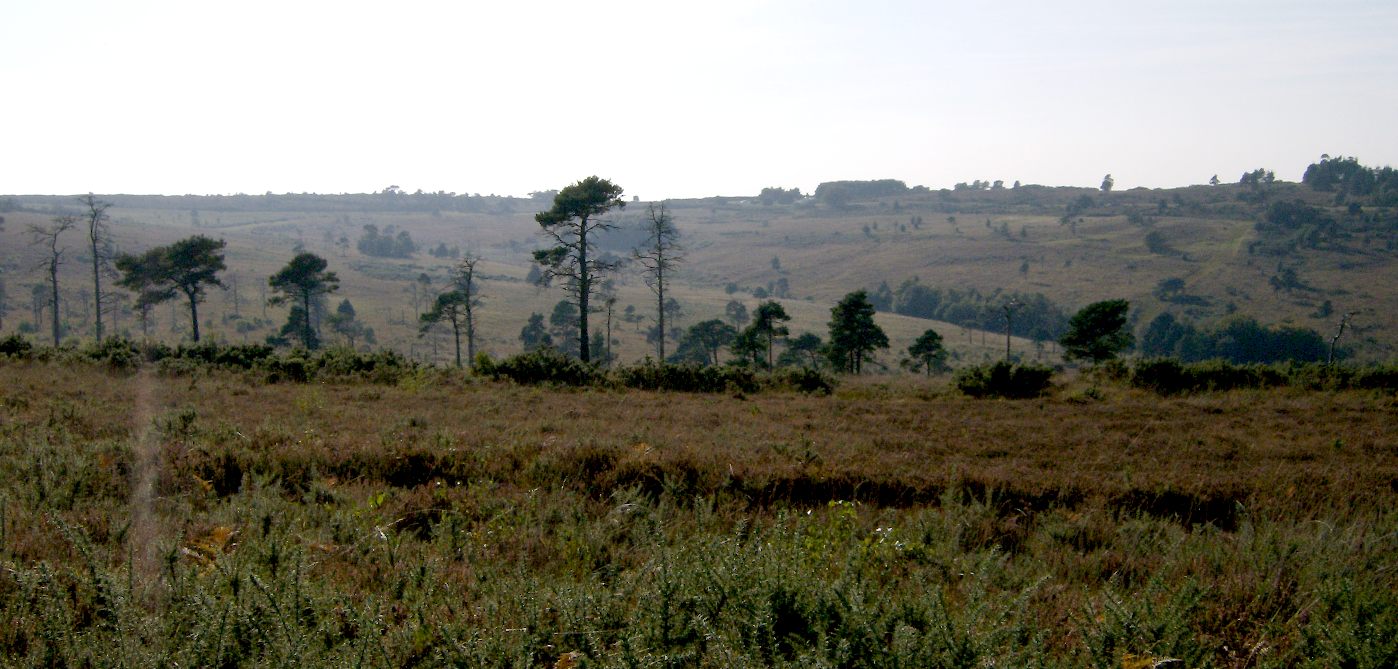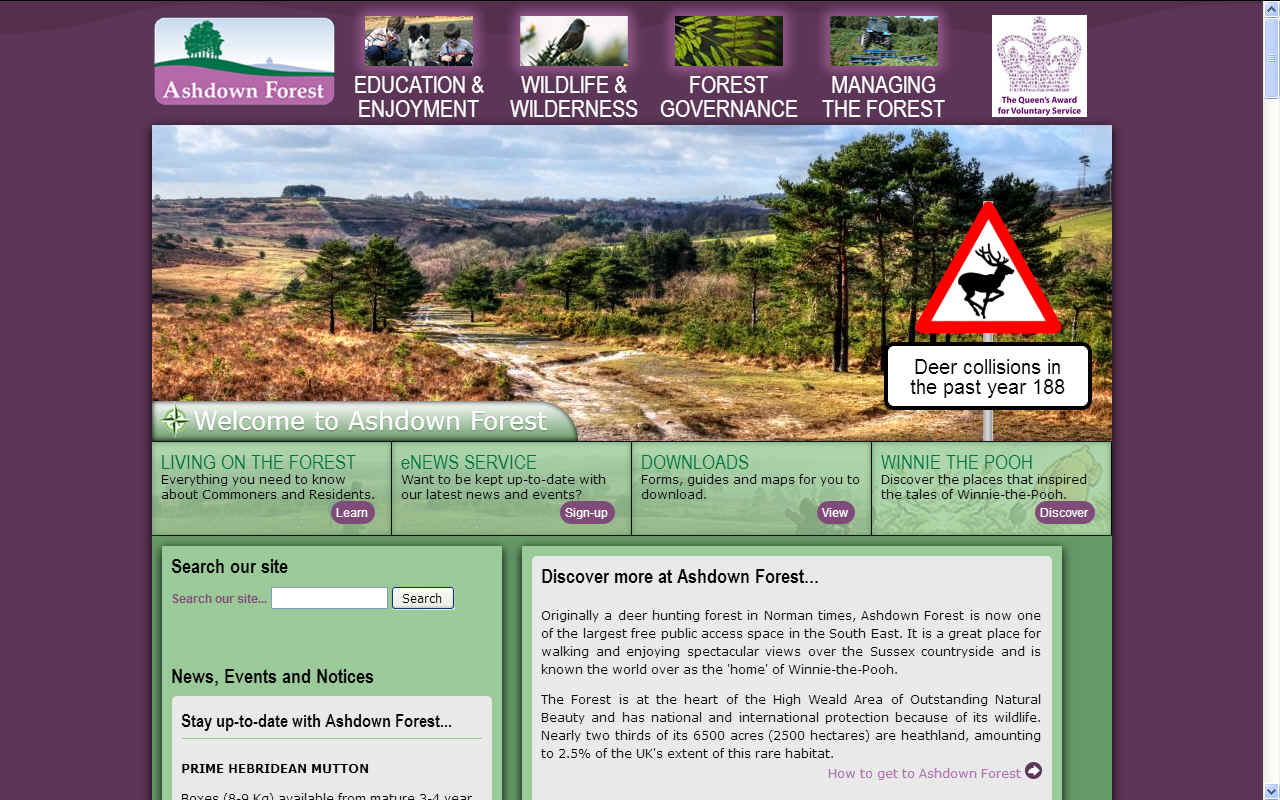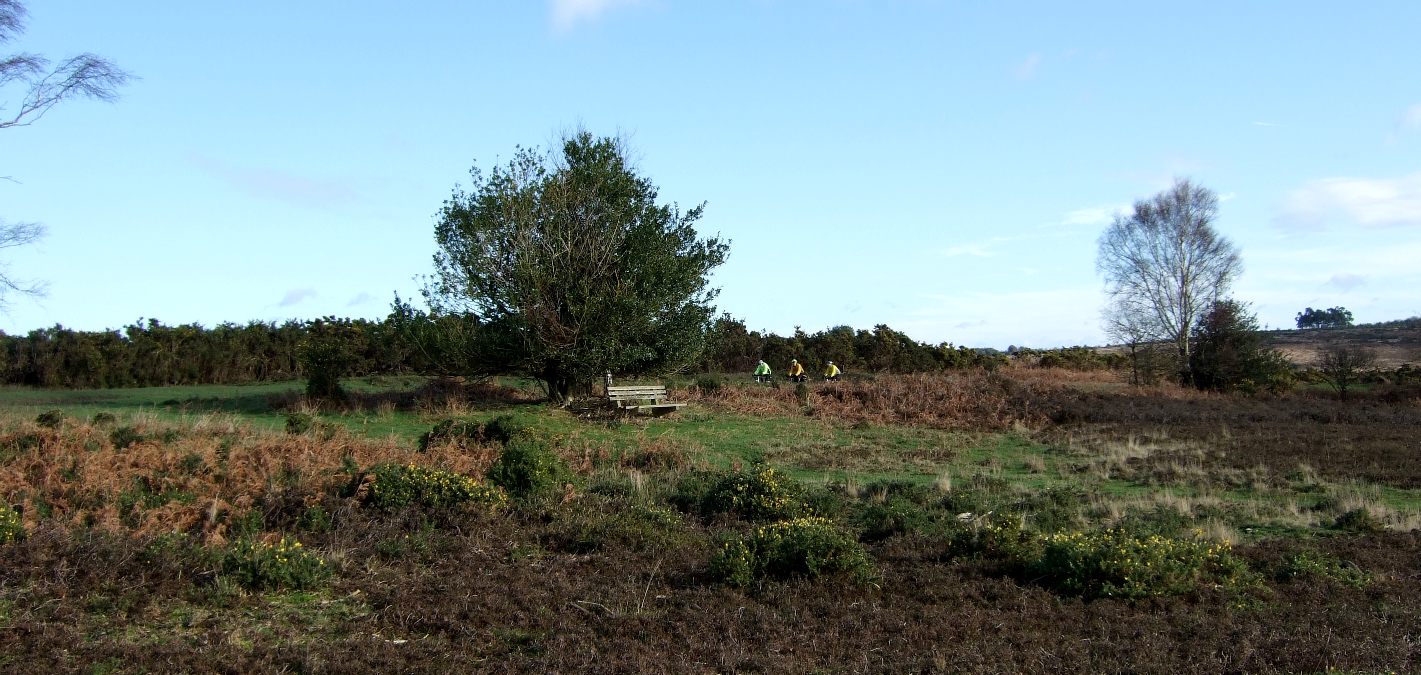|

The
Ashdown Forest is an ancient area of tranquil open heathland occupying the highest sandy ridge-top of the High Weald Area of Outstanding Natural Beauty. It is situated some 30 miles (48 km) south of London in the county of
Sussex,
England. Rising to an altitude of 732 feet (223 m) above sea level, its heights provide expansive vistas across the heavily wooded hills of the Weald to the chalk escarpments of the North Downs and South Downs on the horizon.
Ashdown Forest's origins lie as a medieval hunting forest created soon after the Norman conquest of England. By 1283 the forest was fenced in by a 23 miles (37 km) pale enclosing an area of some 20 square miles (5,200 ha). 34 gates and hatches in the pale, still remembered in place names such as Chuck Hatch and Chelwood Gate, allowed local people to enter to graze their livestock, collect firewood and cut heather and bracken for animal bedding. The forest continued to be used by the monarchy and nobility for hunting into Tudor times, including notably
Henry
VIII, who had a hunting lodge at Bolebroke Castle, Hartfield and who courted
Anne Boleyn at nearby Hever Castle.
Ashdown Forest has a rich archaeological heritage. It contains much evidence of prehistoric human activity, with the earliest evidence of human occupation dating back to 50,000 years ago. There are important Bronze Age, Iron Age and Romano-British remains.
The forest was the centre of a nationally important iron industry on two occasions, during the Roman occupation of Britain and in the Tudor period when, in 1496, England's first blast furnace was built at Newbridge, near Coleman's Hatch, marking the beginning of Britain's modern iron and
steel industry.
In 1693 more than half the forest was taken into private hands, with the remainder set aside as common land. The latter today covers 9.5 square miles (2,500 ha) and is the largest area with open public access in South East England.
The ecological importance of Ashdown Forest's heathlands is reflected by its designation as a Site of Special Scientific Interest, as a Special Protection Area for birds, and as a Special Area of Conservation for its heathland habitats. It is part of the European Natura 2000 network as it hosts some of Europe's most threatened species and habitats.
Ashdown Forest is famous as the setting for the Winnie-the-Pooh stories written by A. A. Milne, who lived on the northern edge of the forest and took his son, Christopher Robin, walking there. The artist E. H. Shepard drew on the landscapes of Ashdown Forest as inspiration for many of the illustrations he provided for the Pooh books.

SPA SPECIAL PROTECTION AREA
Ashdown Forest is an area of European ecological importance. It is designated by the UK government as a Site of Special Scientific Interest (SSSI), and as a Special Protection Area
(SPA) and a Special Area of Conservation (SAC). Ashdown Forest is part of the European Union's Natura 2000 Network.
Though not a statutory designation, Ashdown Forest forms part of the Western Ouse Streams and Ashdown Forest Biodiversity Opportunity Area, and is thus a subject of the
Sussex Biodiversity Action Plan, which aims to focus conservation bodies, local government and statutory agencies on work to conserve and enhance the habitats and species of Sussex.
Ashdown Forest lies within the High Weald Area of Outstanding Natural Beauty.
The areas covered by the statutory designations are not identical to and are generally larger than the area of forest administered by the conservators. The SSSI covers 3,144 hectares (12.1 sq mi), mainly because, in addition to the forest land covered by the conservators, it also includes the Ministry of Defence's Pippingford Park Dry Training Area, accounting for 11% (346 hectares (1.3 sq mi)) of the SSSI, Hindleap Warren, Broadstone Warren and Sussex Wildlife Trust's Old Lodge Local Nature Reserve, which covers 76 hectares (0.3 sq mi). The SPA covers 3,207 hectares (12.4 sq mi) while the SAC covers 2,729 hectares (10.5 sq mi).

What
do you call a council who say one thing when it suits
them to oppose something and do another suits them to
promote something. We call that hypocrisy. Would you
agree? Wealden made a big deal about carbon reduction
when it comes to this forest, but have built almost no
new houses with energy saving features to reduce actual
carbon dioxide production in the UK. They are not
promoting electric vehicles and not installing charging
points for low carbon cars. They do not drive electric
vehicles themselves and have no charging point in
council car parks. Just why is this council sitting on
their hands? They are fiddling while Rome burns, using
your tax money for alternative agendas.
LINKS:
http://www.ashdownforest.org/ http://www.ashdownforest.com/
SUSSEX
INDEX A - Z
ARUNDEL
CASTLE
BATTLE
BATTLE
ABBEY
BATTLE
OF HASTINGS
BEACHY
HEAD
BEXHILL
BODIAM
CASTLE
BRIGHTON
CHICHESTER
CHIDDINGLY
- HORSE
SHOW and GYMKHANA
CROWBOROUGH
CUCKMERE
VALLEY - EXCEAT
DISTRICT
AND BOROUGH COUNCILS
EAST
DEAN - FRISTON FOREST & BIRLING GAP
EAST
SUSSEX
EASTBOURNE
FIRLE
FIRLE
BONFIRE SOCIETY
GLYNDE
GUY
FAWKES
HAILSHAM
HASTINGS
HEATHFIELD
HERSTMONCEUX
LEWES
LEWES
DISTRICT COUNCIL
NEWHAVEN
PEVENSEY
CASTLE
RYE
SEAFORD
SEVEN
SISTERS
SUSSEX
SUSSEX
THINGS TO DO GUIDE
THE
BATTLE OF HASTINGS
TRUGS
TWISSELLS
MILL, OLD HEATHFIELD
UCKFIELD
WEALD







|





